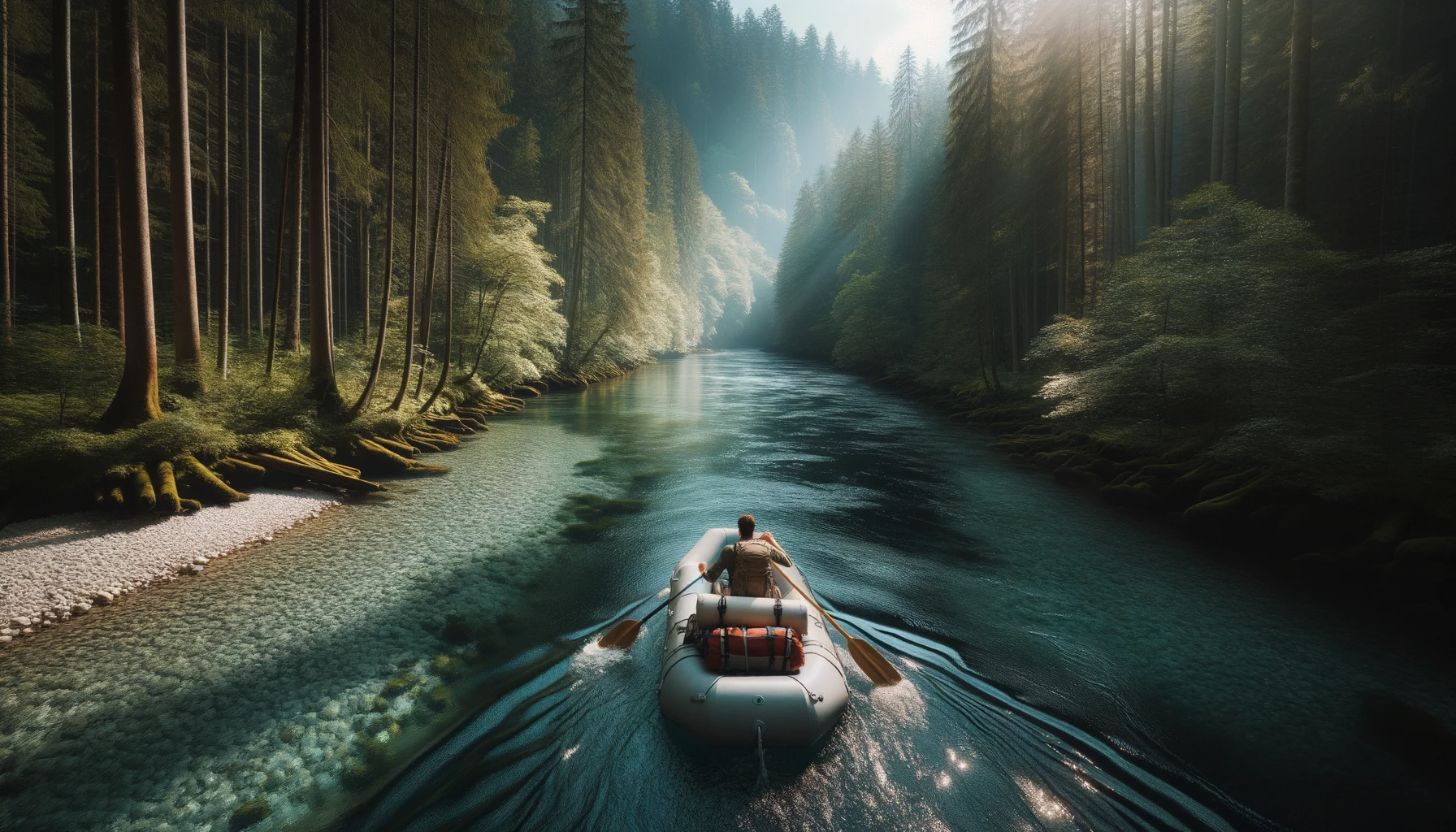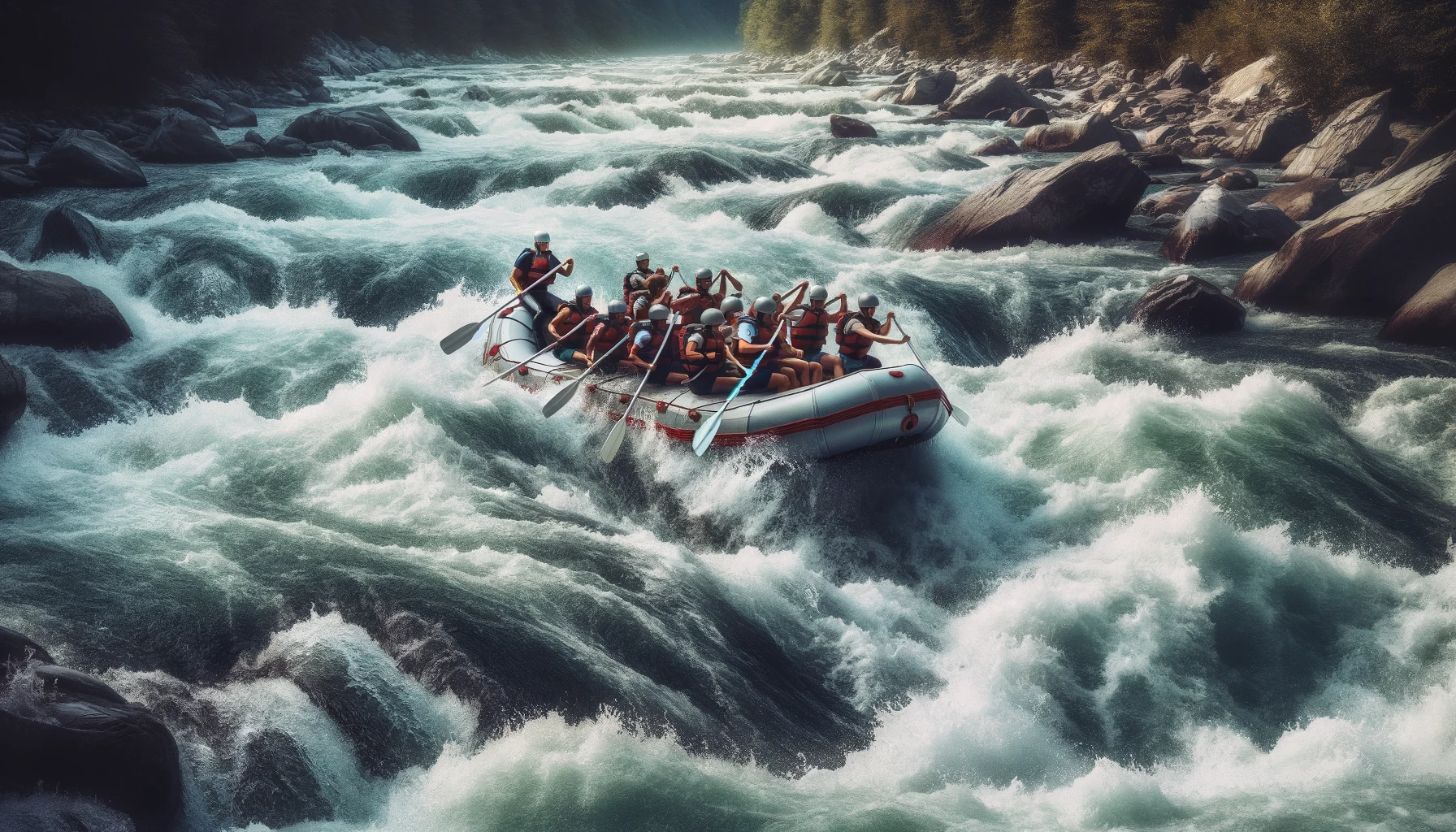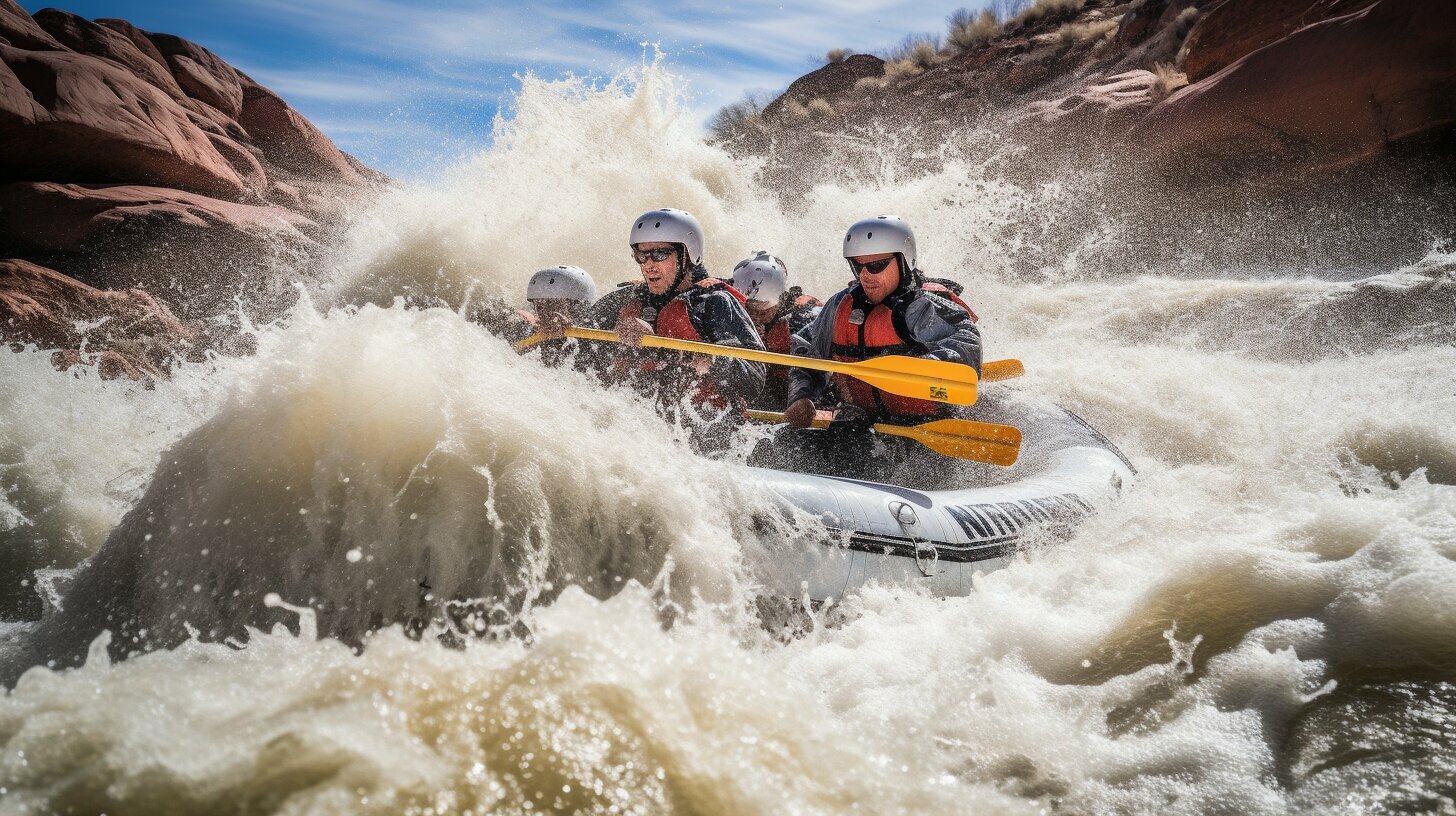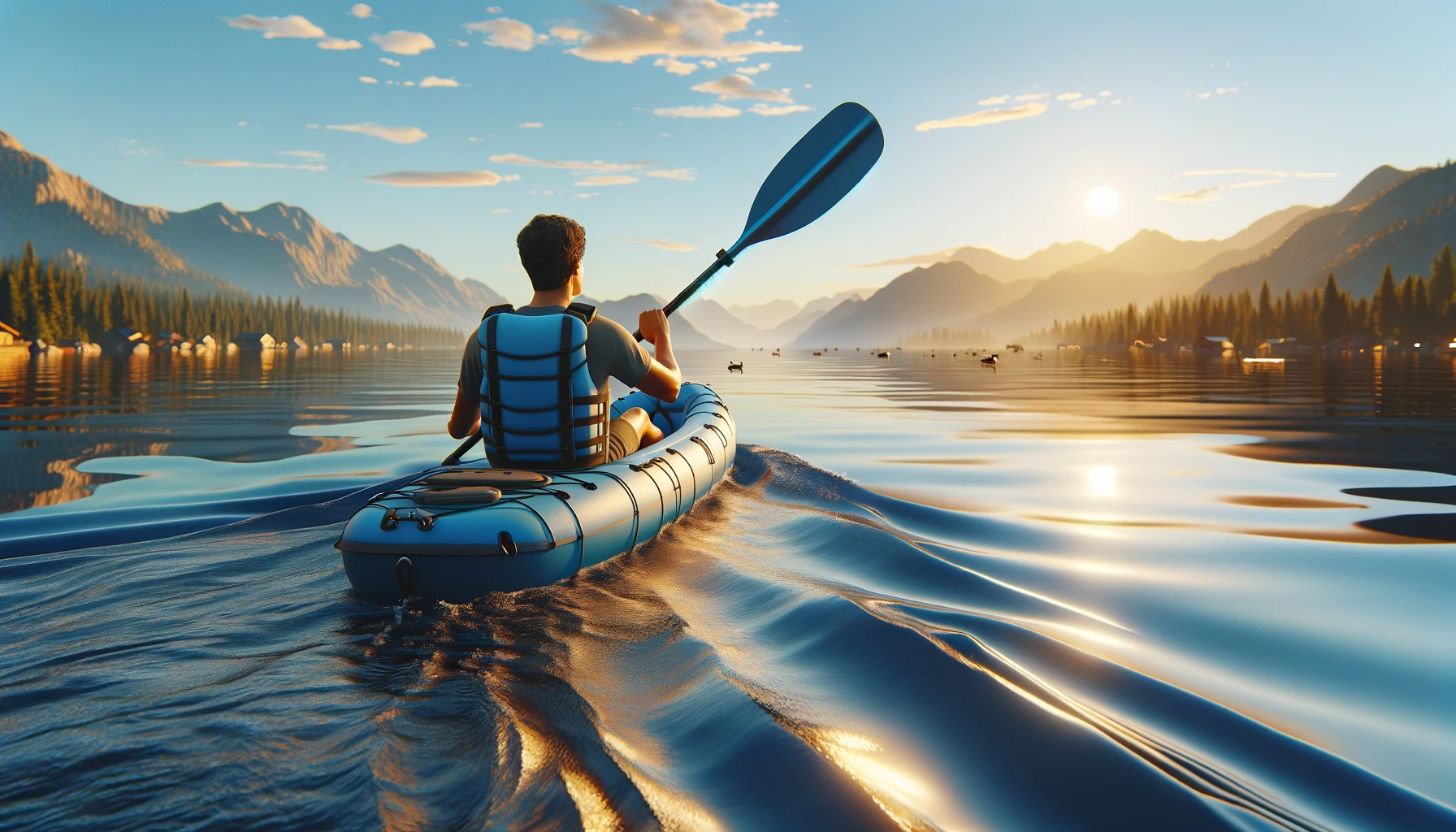If you’re looking for a unique adventure that combines paddling, hiking, and exploring new destinations, packrafting is the perfect activity for you. Whether you’re a seasoned outdoor enthusiast or a beginner, packrafting offers a thrilling and unforgettable experience that you won’t find anywhere else. In this packrafting guide, we’ll cover everything you need to know to get started, including tips for choosing the right gear, planning your trip, mastering essential skills, and exploring some of the best packrafting destinations in the United States.
Key Takeaways
- Packrafting is a unique activity that combines paddling, hiking, and exploring new destinations.
- Whether you’re a seasoned outdoor enthusiast or a beginner, packrafting offers a thrilling and unforgettable experience.
- In this guide, we’ll cover everything you need to know to get started, including tips for choosing the right gear, planning your trip, mastering essential skills, and exploring some of the best packrafting destinations in the United States.
- With proper preparation and planning, you can embark on your own unique packrafting adventure and explore the world from a whole new perspective.
- Keep reading to learn more about the essential tips, techniques, and information you need to know before embarking on a packrafting adventure.
Understanding Packrafting: A Beginner’s Introduction
Are you ready to embark on a packrafting adventure but don’t know where to start? This section will provide you with a beginner’s introduction to packrafting.
Packrafting is a unique way to explore the great outdoors, combining hiking and paddling to offer an immersive wilderness experience.
Disclosure: When you buy through links on our site, we may earn an affiliate commission.
Before you begin your first packrafting trip, it’s important to learn the necessary skills and understand the equipment required.
What is Packrafting?
Packrafting involves using a small, lightweight boat (packraft) to navigate waterways, including rivers, lakes, and streams.
These boats are designed to be portable, allowing you to hike to your starting point and then pack up your vessel and continue on foot when you reach your destination.
Essential Packrafting Skills
To embark on a packrafting trip, there are a few essential skills you’ll need to master:
- Paddling technique
- Navigation skills
- Basic river and waterway safety
It’s important to practice these skills in a controlled environment before taking on more challenging packrafting trips.
Packrafting Equipment
Before you get started with packrafting, you’ll need to invest in some essential gear, including:
- A packraft
- A paddle
- A personal flotation device (PFD)
- Proper clothing and footwear
- A dry bag to protect your gear
Investing in high-quality equipment will ensure your safety and enhance your packrafting experience.
Types of Packrafting Trips
There are several types of packrafting trips you can embark on, including:
- Short day trips
- Multi-day expeditions
- Whitewater packrafting
- Bushwhacking or backcountry packrafting
Each type of trip offers a unique packrafting experience, so it’s important to choose the right one for your skill level, preferences, and interests.
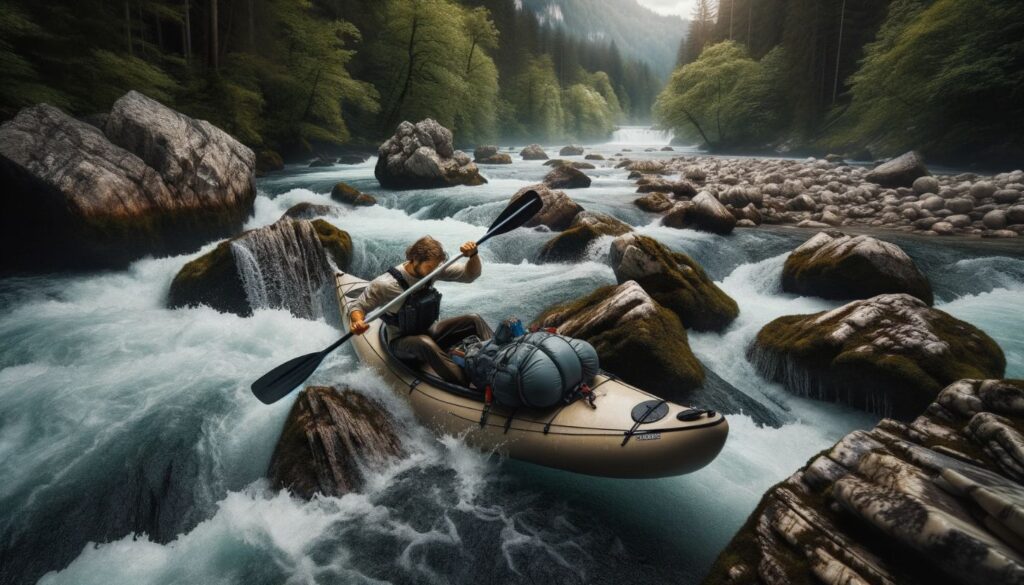
Must-Have Equipment for Packrafting
When it comes to packrafting, having the right gear can make or break your adventure. Here’s a breakdown of the essential equipment you’ll need:
| Gear | Description |
|---|---|
| Packraft | The first and most essential piece of gear is, of course, the packraft itself. These inflatable boats are lightweight and portable, making them perfect for accessing remote waterways. There are many different options available, so be sure to choose one that suits your needs. |
| Paddle | A good paddle is crucial for maneuvering your packraft on the water. Look for one that’s lightweight and sturdy, with a comfortable grip. |
| Personal Flotation Device (PFD) | Wearing a PFD is essential for safety on the water, especially when packrafting through rapids or other challenging conditions. Ensure that your PFD fits well and is designed for packrafting. |
| Helmet | A helmet is another important safety item, especially for packrafting through whitewater. Look for one that’s designed for water sports and fits comfortably and securely on your head. |
| Throw Bag | A throw bag is a safety device that can be used to rescue a person or gear in the event of an emergency. It should be easily accessible and have a long enough rope to reach across the water. |
| Repair Kit | Accidents happen, so it’s always a good idea to carry a packraft repair kit with you. This should include patches, glue, and any necessary tools. |
| Navigation Tools | When packrafting, it’s important to have the necessary navigation tools to ensure you know where you’re going and can stay safe. This should include a map, compass, and/or GPS device. |
By ensuring you have all the necessary gear, you’ll be ready to embark on your packrafting adventure with confidence. Remember to always prioritize safety and choose gear that’s appropriate for your skill level.
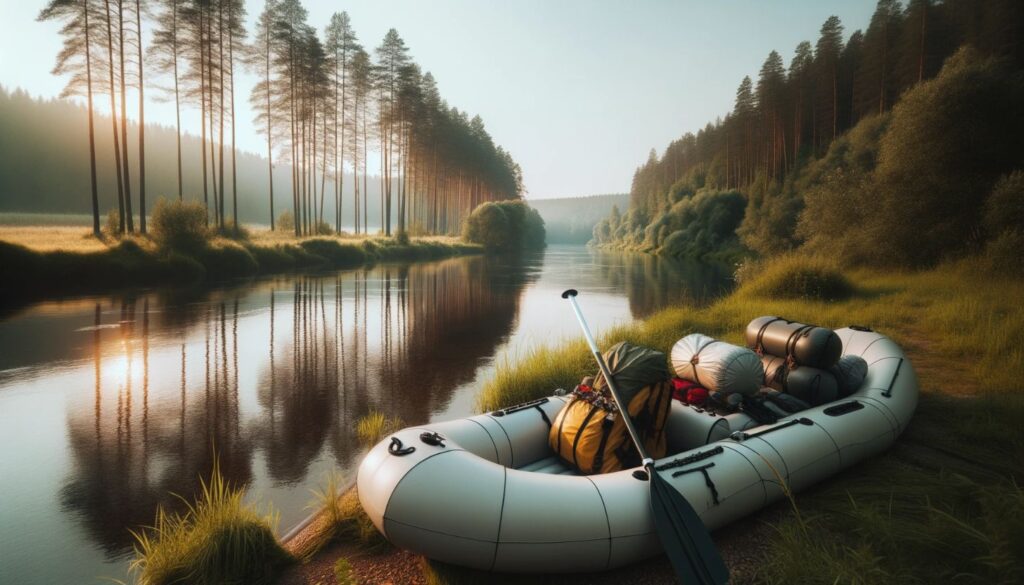
Skills for Packrafting Success
Mastering packrafting techniques is crucial for a safe and enjoyable adventure. Paddling, navigation, and safety are all essential skills that must be honed before hitting the water.
Start by practicing paddling techniques on calm waters before progressing to more challenging rapids or rivers. The proper paddling technique involves holding the paddle with both hands, keeping your arms straight, and using your torso to drive the paddle through the water. Remember to keep your gaze forward and always anticipate changes in the current.
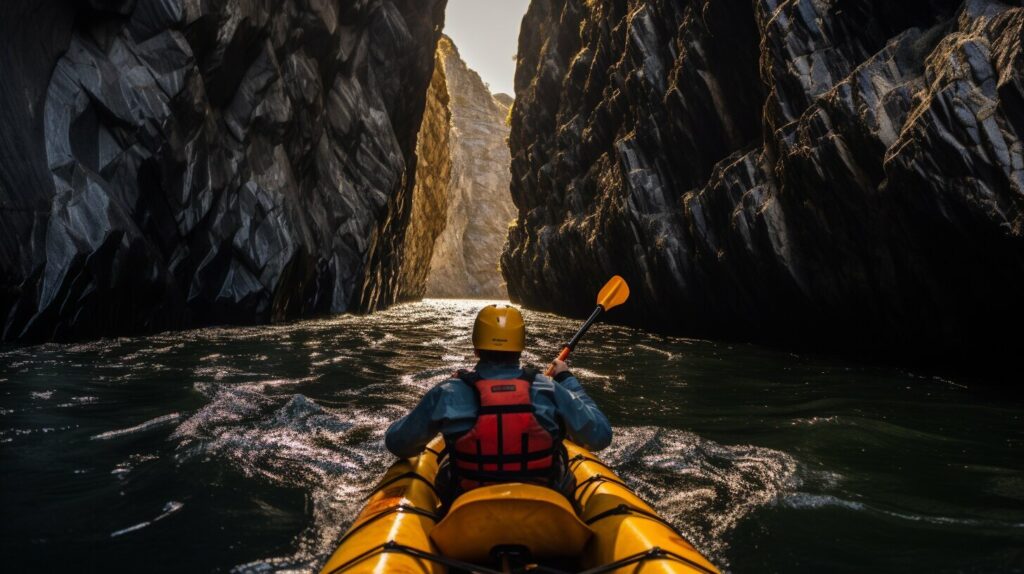
Navigation skills are also vital for packrafting. Learn how to read the water, identify potential hazards, and plan your route accordingly. Topographic maps and GPS devices can be valuable tools for navigation, but it’s essential to have basic orienteering skills as well. Always be aware of your surroundings and be prepared to make changes if necessary.
Lastly, safety should be your top priority when packrafting. Always wear a personal flotation device (PFD) and consider a helmet for more challenging rapids. It’s also a good idea to carry a first aid kit, rescue rope, and other safety equipment in case of an emergency. Always assess the risks before embarking on any packrafting trip and be prepared to react quickly if necessary.
Choosing the Perfect Packrafting Trip: Best Destinations and Routes
One of the most exciting parts of packrafting is exploring new destinations and discovering stunning landscapes. From serene backcountry lakes to thrilling whitewater rivers, there is a packrafting trip for every type of adventurer. Here are some of the best packrafting destinations and routes to add to your bucket list:
- Grand Canyon, Arizona: One of the most iconic packrafting trips, the Grand Canyon offers breathtaking scenery and challenging rapids.
- Middle Fork of the Salmon River, Idaho: This wilderness river trip takes you through stunning canyons and offers a mix of exciting rapids and peaceful float sections.
- Pacific Northwest, Washington and Oregon: With a variety of rivers and streams to choose from, the Pacific Northwest offers endless opportunities for packrafting.
- Alaska: From the remote coastal waterways to the wild rivers of the interior, Alaska is a packrafter’s dream destination.
- Colorado River, Utah: This trip takes you through the heart of Canyonlands National Park, offering unique geological formations and challenging rapids.
- Middle Fork of the Flathead River, Montana: This scenic river trip takes you through the heart of the Bob Marshall Wilderness and offers a mix of fun rapids and peaceful float sections.
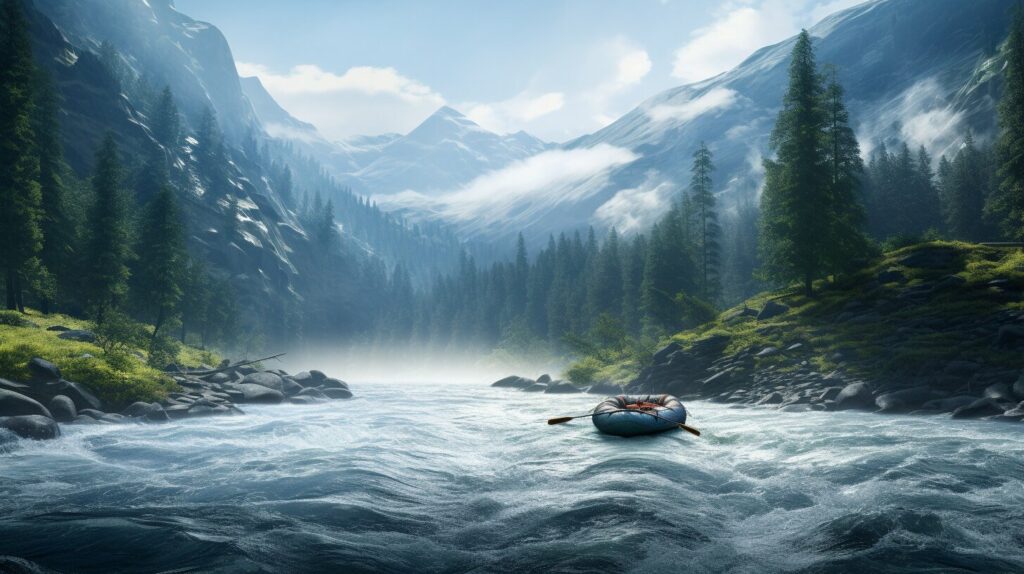
When choosing a packrafting trip, consider your skill level, experience, and the type of adventure you’re looking for. Some destinations and routes may require advanced packrafting skills and experience, while others may be suitable for beginners. Whatever your experience level, there’s a packrafting trip out there that will take your breath away.
Preparing for Potential Risks
When it comes to packrafting, safety should always be your top priority. Before embarking on any packrafting trip, it’s crucial to prepare for potential risks and ensure that you have the necessary equipment and skills to handle any situation that may arise.
The first step to staying safe on the water is to make sure you have the right packrafting equipment. This includes a properly fitting PFD or personal flotation device, a helmet, and appropriate clothing and footwear. You should also bring a first aid kit, throw bag, and repair kit in case of emergencies. Be sure to check all of your equipment before each trip to make sure it’s in good condition and functioning properly.
In addition to having the right equipment, you should also have the packrafting skills necessary to stay safe on the water. This includes knowing how to perform proper paddling techniques, basic navigation, and rescue and self-rescue techniques. If you’re new to packrafting or need to brush up on your skills, consider taking a packrafting course or practicing in calm waters before attempting more challenging trips.
It’s also important to assess potential risks before each packrafting trip. Research the waterway you’ll be paddling, including its flow rate and any potential hazards such as rapids or waterfalls. Check the weather forecast and be prepared for changing conditions. Always let someone know your itinerary and expected return time, and bring a communication device such as a radio or cell phone in case of an emergency.
By following these packrafting safety guidelines and taking the necessary precautions, you can enjoy your packrafting adventures with confidence and peace of mind.
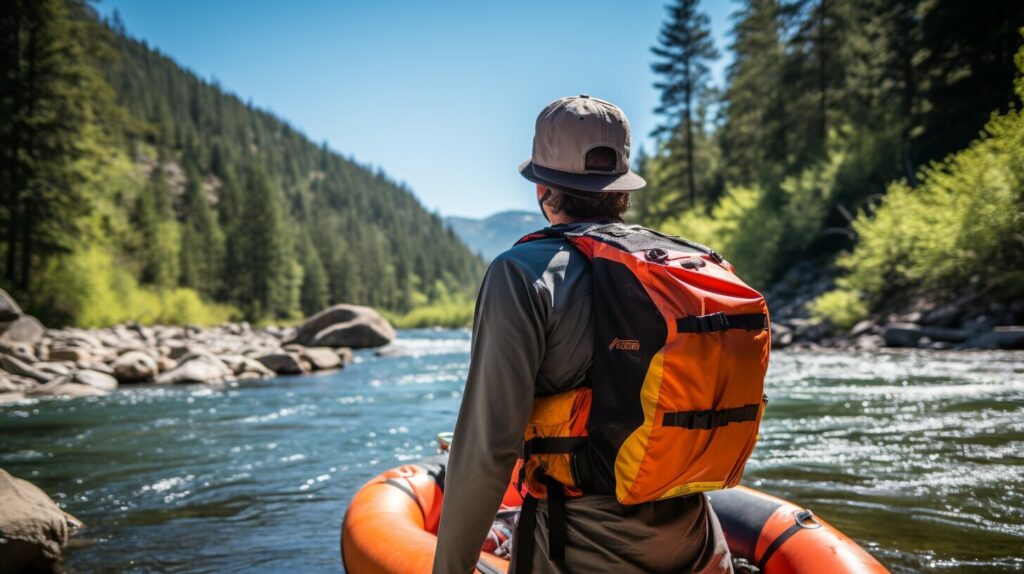
Advanced Packrafting Techniques: Challenges and Skills
Now that you’ve mastered the basics of packrafting, it’s time to take your skills to the next level. Advanced packrafting techniques are essential for tackling more challenging rivers, rapids, and other obstacles that come with the territory. In this section, we’ll discuss some of the most important skills and techniques you need to know for advanced packrafting.
Reading the Water
One of the most important skills you need for advanced packrafting is the ability to read the water. By understanding how water moves and changes, you can anticipate obstacles and choose the best route through a rapid or other tricky section of a river. Look for currents, eddies, waves, and other features to help guide your path.
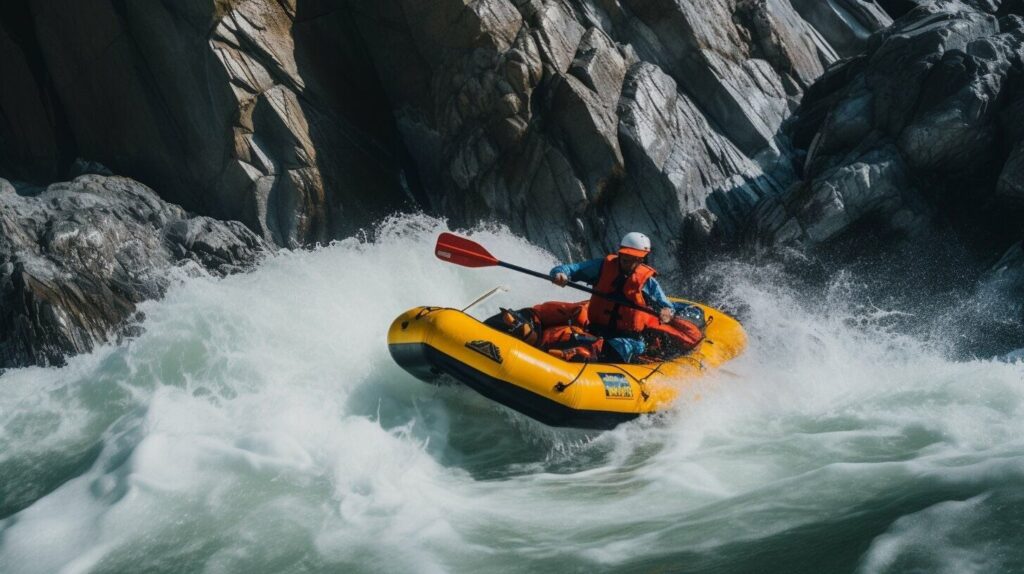
As you progress in your packrafting skills, you’ll encounter difficult maneuvers that require advanced techniques. For example, you may need to execute a quick turn or pivot to avoid an obstacle or avoid getting caught in a strong current. Practice these maneuvers in calm waters before attempting them in more challenging conditions.
Navigating Complex Terrain
Advanced packrafting often involves navigating through rough terrain, such as steep canyons or dense forests. Use your navigation skills to plan your route and anticipate potential obstacles. Make sure you’re prepared with the proper equipment, such as GPS or maps, to help guide you through unfamiliar territory.
By mastering these advanced packrafting techniques, you’ll be able to tackle even the most challenging rivers and rapids with confidence and skill.
Extended Packrafting Adventures: Multi-Day Trips and Expeditions
If you want to take your packrafting experience to the next level, consider embarking on a multi-day trip or expedition. These immersive adventures offer an opportunity to explore some of the most remote and beautiful destinations around the United States.
To plan a successful extended packrafting adventure, you’ll need to take into account several factors. First, make sure you have the right gear for the trip: a durable packraft, sturdy paddle, and high-quality camping equipment are essential. You’ll also need to pack enough food and water to sustain you throughout the trip, as well as any necessary safety equipment (such as a first aid kit or emergency beacon).
When choosing a packrafting route for a multi-day trip, consider factors such as the difficulty of the terrain, the availability of campsites or lodging, and the length of the trip. Some popular multi-day packrafting routes include:
- The Middle Fork of the Salmon River in Idaho, a challenging 5-7 day trip through a remote wilderness area
- The Grand Canyon in Arizona, a bucket list trip that takes about 12-25 days to complete
- The Alsek River in Alaska and Canada, a two-week expedition that offers stunning views of glaciers and wildlife
Keep in mind that extended packrafting trips require advanced planning and preparation. You’ll need to consider factors such as weather, water levels, and potential hazards (such as rocky rapids or animal encounters). It’s also a good idea to take a packrafting skills course or hire a guide to ensure your safety and enjoyment on the trip.
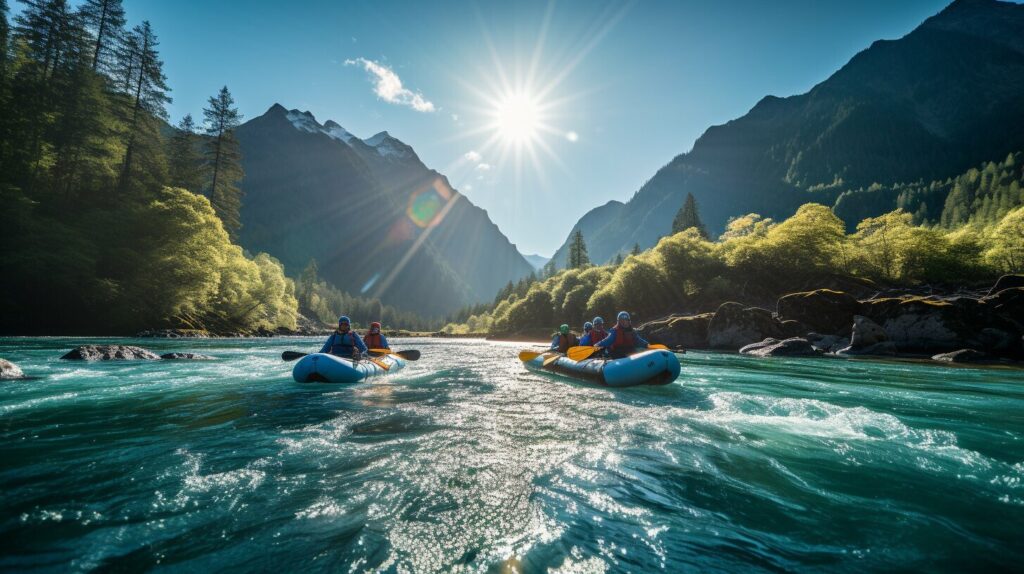
With the right planning and preparation, an extended packrafting adventure can be a life-changing experience. Whether you’re exploring the Grand Canyon or paddling through the Alaskan wilderness, you’ll discover a sense of freedom and connection with nature that can’t be found anywhere else. So grab your gear, plan your route, and set out on the adventure of a lifetime!
Packrafting Tips and Tricks
Embarking on a packrafting adventure can be an exhilarating experience, but there are always ways to enhance your trip and make it even more enjoyable. Here are some essential packrafting tips and tricks:
- Pack light: When planning your trip, pack only the essentials. Keep in mind that packrafting requires carrying all your gear on the water and potentially hiking or portaging to your destination. Consider the weight and size of each item and pack accordingly.
- Dress appropriately: Water and weather conditions can change quickly, so be prepared with appropriate clothing. Dress in layers and be sure to pack a waterproof jacket and pants.
- Stay hydrated: Proper hydration is essential for any outdoor activity. Pack enough water and consider bringing a water filtration system for longer trips.
- Check weather conditions: Keep an eye on weather forecasts and be prepared for changing conditions. Wind, rain, and storms can all impact your packrafting trip.
- Be mindful of others: Packrafting is often done in remote locations, so be respectful of other adventurers, wildlife, and the environment.
- Practice your skills: Before embarking on a challenging packrafting trip, consider taking a skills course or practicing in calmer waters to improve your technique and confidence.
- Enjoy the experience: Packrafting is a unique and unforgettable way to explore the outdoors. Take the time to appreciate the beauty of your surroundings and enjoy the adventure.
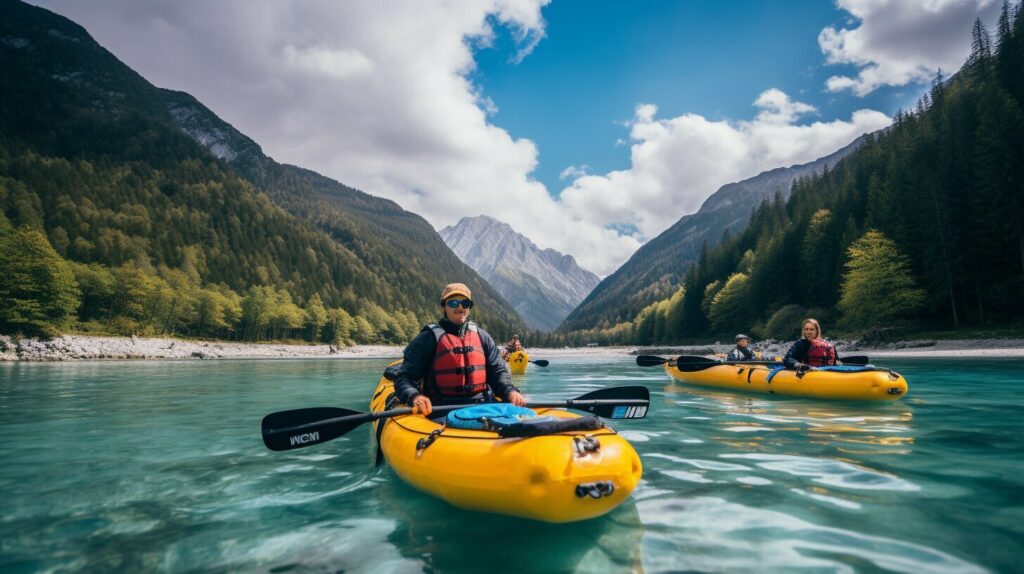
Preserving Nature’s Beauty
As you embark on packrafting trips, it’s important to minimize your impact on the environment and practice Leave No Trace principles. These principles are critical for preserving the natural beauty of our waterways and ensuring future generations can enjoy them too.
Here are some tips to help you leave no trace while packrafting:
- Plan ahead: Research the area you will be visiting and learn about any specific environmental regulations or concerns.
- Pack it in, pack it out: Bring a trash bag with you and carry out all trash and litter.
- Avoid dams and other barriers: These artificial structures can disrupt natural river ecosystems. Find alternative routes or portage around them.
- Minimize campfire impact: Use an established campsite, keep fires small, and use a stove instead of a fire when possible.
- Stay on designated trails: Avoid trampling fragile vegetation or disturbing wildlife habitats.
Remember, Leave No Trace is not just a principle to follow – it’s a way of life. By practicing these principles, we can all do our part to protect the natural world and ensure that future generations can enjoy the beauty of packrafting trips.
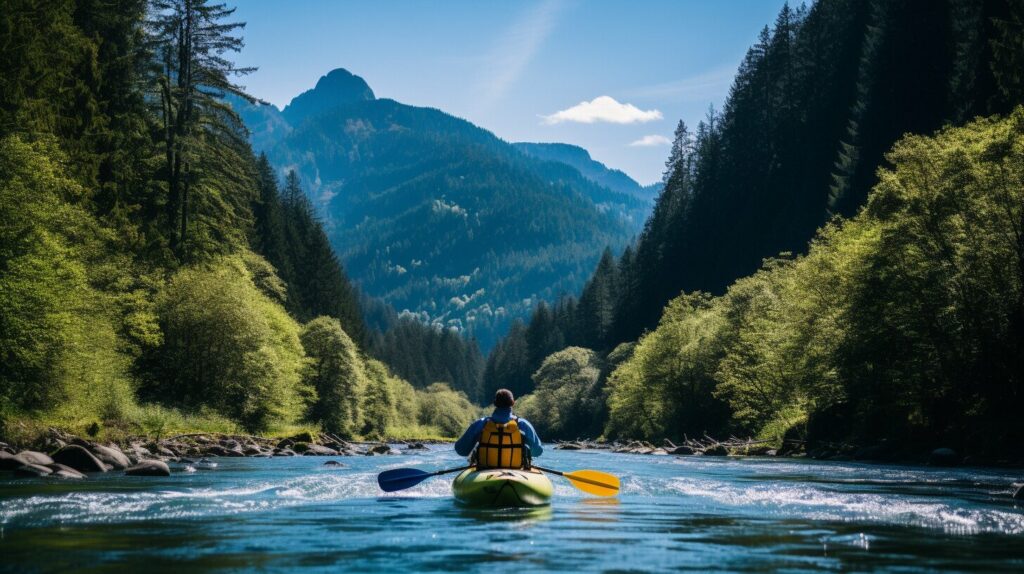
Now that you have all the essential information and skills necessary for an unforgettable packrafting adventure, it’s time to put them to use. Choose from the many amazing destinations and routes available in the United States and embark on a unique outdoor experience like no other.
Unleash Your Inner Adventurer
With packrafting, you have the opportunity to explore the world from a whole new perspective. Whether you’re seeking calm waters or thrilling whitewater rapids, packrafting offers a unique and exciting way to connect with nature and experience the great outdoors.
Remember to always prioritize safety, pack the necessary equipment, and follow proper techniques and skills. Enhance your experience with the tips and tricks provided in this guide, and always practice Leave No Trace principles to minimize your environmental impact.
Thank you for taking the time to read this packrafting guide. We hope it has provided you with valuable information and inspiration for your next adventure. Happy packrafting!
FAQ
What is packrafting?
Packrafting is a form of adventure travel that involves using lightweight inflatable rafts, or packrafts, to navigate rivers, lakes, and other bodies of water. It combines elements of backpacking and whitewater rafting, allowing you to access remote and inaccessible areas.
What skills do I need for packrafting?
Basic swimming skills are essential for packrafting. Additionally, you should have some knowledge of paddling techniques, navigation, and outdoor survival skills. It’s also important to be physically fit and comfortable in the water.
What equipment do I need for packrafting?
The essential equipment for packrafting includes a packraft, paddle, personal flotation device (PFD), helmet, dry bags for gear storage, and appropriate clothing for the conditions. Depending on the trip, you may also need camping gear, a GPS device, and other safety equipment.
How do I choose the right packrafting trip?
When choosing a packrafting trip, consider your skill level, experience, and the type of adventure you’re seeking. Research different destinations, routes, and difficulty levels. It’s also important to consider factors such as water conditions, remoteness, and accessibility.
What safety precautions should I take while packrafting?
Safety should always be a top priority when packrafting. Ensure you have the necessary safety equipment, such as a PFD and helmet. Learn proper paddling techniques and basic rescue skills. Be aware of potential hazards, assess risks, and make informed decisions about when and where to paddle. Always check weather conditions and inform someone of your plans.
Are there advanced packrafting techniques to learn?
Yes, once you have mastered the basic packrafting skills, you can progress to more advanced techniques. These may include reading water currents, maneuvering through rapids, and navigating challenging terrain. It’s important to seek proper instruction and practice in controlled environments before attempting advanced techniques.
Can I go on multi-day packrafting expeditions?
Absolutely! Multi-day packrafting trips offer the opportunity to explore remote wilderness areas and have immersive experiences. However, they require careful planning and preparation, including equipment, navigation skills, food and water provisions, and knowledge of camping and wilderness regulations.
What are some packrafting tips and tricks?
Here are some packrafting tips to enhance your experience: pack light and efficiently, dress appropriately for the weather, carry extra dry bags for organization, practice self-rescue and swimming techniques, learn basic first aid skills, and be prepared for changing weather conditions.
How can I minimize my impact on the environment while packrafting?
Practice Leave No Trace principles while packrafting. This includes packing out all trash, minimizing campfire impacts, camping in designated areas, respecting wildlife and vegetation, and leaving natural objects undisturbed. Be mindful of your actions and strive to leave the natural environment as you found it.

